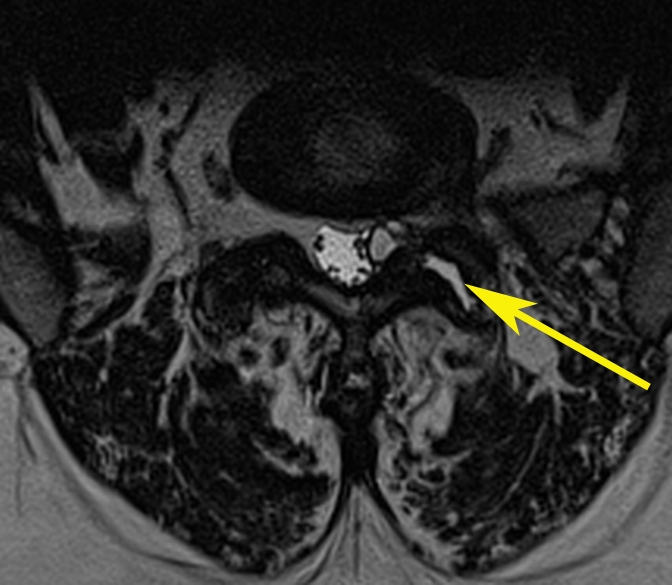Back and neck pain are some of the most common injury complaints among golfers, due to the crucial role of the spine in the rotational movements of the golf swing. Such injuries are often muscle strains, but occasionally the pain stems from more serious damage to tissues within the spine.
Golfing superstar, Tiger Woods, who ranks 2nd in all-time PGA tour wins and major tournament wins, has endured typical golf injuries in just about every part of his body, including his neck. Woods pulled out of the Players Championship in 2010 after a week of distracting neck pain, later revealing that MRI scans had shown inflammation of a facet joint. Facet joints are one of the connection points between vertebrae, and the soft tissue within the joint can often become inflamed due to repetitive rotation and twisting of the spine. Read more about Woods’s neck injury here.
MRI is an essential tool for detecting problems of the soft-tissue structures of the body. The MR image below shows an example of reactive inflammation of a facet joint of the lumbar spine, shown in the axial plane. The arrow indicates the location of fluid in the joint space, which is a sign of reactive synovitis.

Note: image is an example – not that of the athlete named above.
MRI examinations are the perfect way to get a close look at the spine in cases of neck and back pain. The images can show the various soft tissues in detail, enabling radiologists to find the root cause of discomfort, whether it is inflammation of a muscle or tendon, damage to vertebrae, or a problem with tissues within the vertebral joints.
As already mentioned, Tiger Woods’s medical record reads like a catalogue of typical golf injuries. Check out ESPN’s rundown of his injury history here. You can also read an interesting discussion of back pain in sport, with reference to his case, here.
